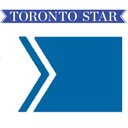
Jason Heath
Aug. 31, 2020
Canadians are going through unprecedented tough times. We are in a recession. Millennials and Gen Zers are particularly vulnerable given limited savings to fall back on. It is important to know that it is OK to tap government financial support and you may have no choice but to raid your savings or rack up debt — but before doing so, here’s what to consider.
The federal government recently announced that the Canada Emergency Response Benefit for employed and self-employed Canadians directly affected by COVID-19 has been extended. What does that mean? Eligible CERB recipients are paid $2,000 for a four-week period and the 24-week limit is now 28 weeks — a maximum of seven eligibility periods.

What about when it ends? The final period for the CERB is between August 30 and September 26. That means some workers who are unemployed or underemployed may be worried about cash flow in October. Youth unemployment rose to nearly 30 per cent over the past few months and has only just started to recover.
Young people get a lot of criticism for their avocado toast and mochaccinos. I am a couple years older than the oldest millennials and we always have avocados on our shopping list and I enjoy fancy coffees. Maybe I am trying to act younger than I am, though I have not yet tried to cover up the white in my beard. Regardless, despite being a financial planner, I admit that I splurge on the very things that older generations blame for ruining young people’s financial security. That does not make me a bad financial planner, nor does it make you irresponsible for not being someone else’s version of financial perfection, either.
Rest assured, not every penny you have needs to be spent smartly. Not every dollar you earn needs to be saved. It is fine to go sideways or even backwards financially at times in your life. Saving for retirement is like a road trip with pit stops along the way. Even if you do not take the fastest or most direct route, you can get to your destination eventually and some of the detours may be the best parts of the drive.
For some, this pandemic is their second once-in-a-lifetime financial crisis along with the Great Recession of 2008. All before they have even had a mid-life crisis.
So, what is a CERB recipient to do next? Here are my tips:
- Income support will be available by way of the Employment Insurance program for those who were receiving the CERB, including temporary measures to help more people qualify. EI eligibility is based on hours worked in the previous year, and since the pandemic limited people’s ability to work, applicants can now qualify for EI with as little as 120 hours in the previous year. This lower threshold is being made retroactive to March 15, so anyone who could not qualify for maternity, parental, compassionate care, family caregiver, or worksharing benefits due to an hours shortfall may now be able to receive EI. CERB recipients will automatically transition to the EI program on September 27 and receive a maximum of $573 per week for up to 45 weeks.
- There is a new Canada Recovery Benefit that will also be available as of September 27 for those who are not eligible for EI — mainly those who are self-employed or work in the gig economy. Canadians who are 15 or older who have been unable to work or had their income reduced relative to pre-COVID-19 pandemic levels may qualify for the CRB. The benefit is $400 per week for up to 26 weeks for those who had employment or self-employment income of at least $5,000 in either 2019 or 2020 and did not stop working voluntarily.
- If you need to carry a credit-card balance, consider the alternative of a line of credit. Line-of-credit interest rates are often lower than credit cards. Just be careful about increasing your credit limits and balances without a plan to pay down debt or succumbing to the temptation of spending money that you really do not need to spend.
- If you have home equity, a secured line of credit will have a lower interest rate than a traditional unsecured line of credit or credit card. A secured line of credit or home equity line of credit is backed by your home’s value. Credit limits are generally limited to 65 per cent of your home value less any existing mortgages.
- Mortgage amortizations or repayment periods are typically up to 25 years. For homeowners with more than 20 per cent equity in their home, their maximum amortization could be 30 years or possibly more depending on the lender. When you increase your amortization, it decreases your payments. In the long run, this can be a risky strategy, making it harder to pay off your debt — especially when interest rates rise and further increase your amortization. In the short run, asking your lender about increasing your amortization could help your cash flow by lowering your payments. You can and should increase payments in the future when your cash flow improves.
- Ask your lender about a payment deferral for your mortgage, student loan, or other debts. Interest will continue to accumulate, but you may not have to make your regular payments — possibly for up to six months.
- If you have a Tax Free Savings Account, you can take money out of your TFSA at any time. There are no restrictions on TFSA withdrawals, and they are tax-free. Amounts withdrawn from your TFSA are added back to your TFSA room the following January 1. TFSA withdrawals are probably preferable to borrowing on credit.
- Registered Retirement Savings Plan withdrawals are taxable. You can take money out of your RRSP, but there will be withholding tax on the withdrawal (ranging from 10-30 per cent). The withdrawal is added to your income and may result in additional tax or a tax refund when you file your tax return depending on your other income sources, tax deductions, and tax credits for the year. Withdrawing from your RRSP means that RRSP room is lost forever. If you are a full-time post-secondary student, you can apply to take up to $10,000 in a calendar year and $20,000 in total out of your RRSP without paying tax under the Lifelong Learning Plan (LLP). Repayments are required in future years.
- Increased Canada student grants and loans began on August 1 to provide financial aid to college and university students for the 2020-21 school year. You can apply directly with your provincial or territorial student aid service.
This pandemic is an extraordinary situation, but this, too, shall pass. When it does, the sooner you can consistently spend less than you earn, pay down debt and save for retirement, the sooner you can become financially independent. Be sure to enjoy a latte or some guacamole along the way. I will.


